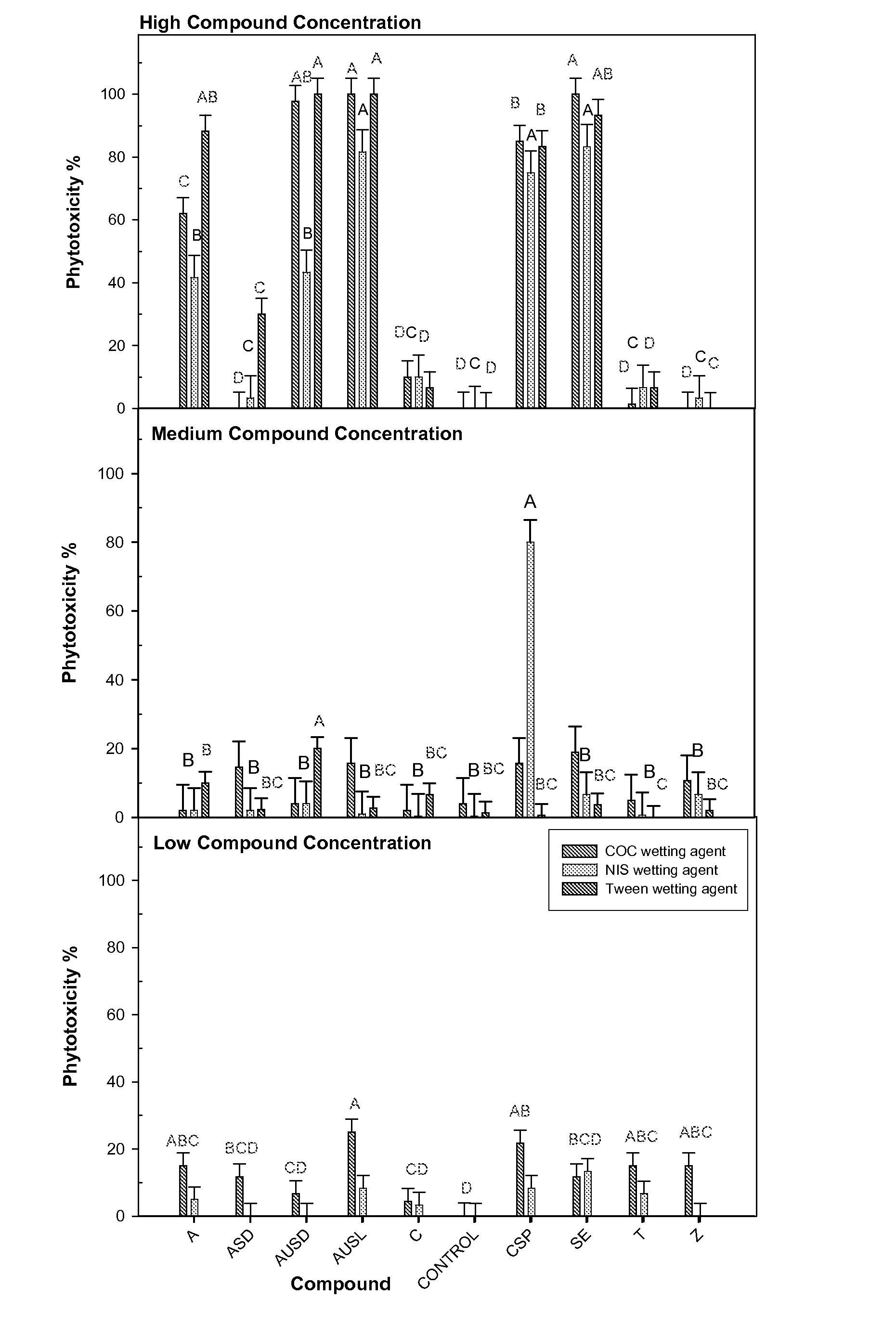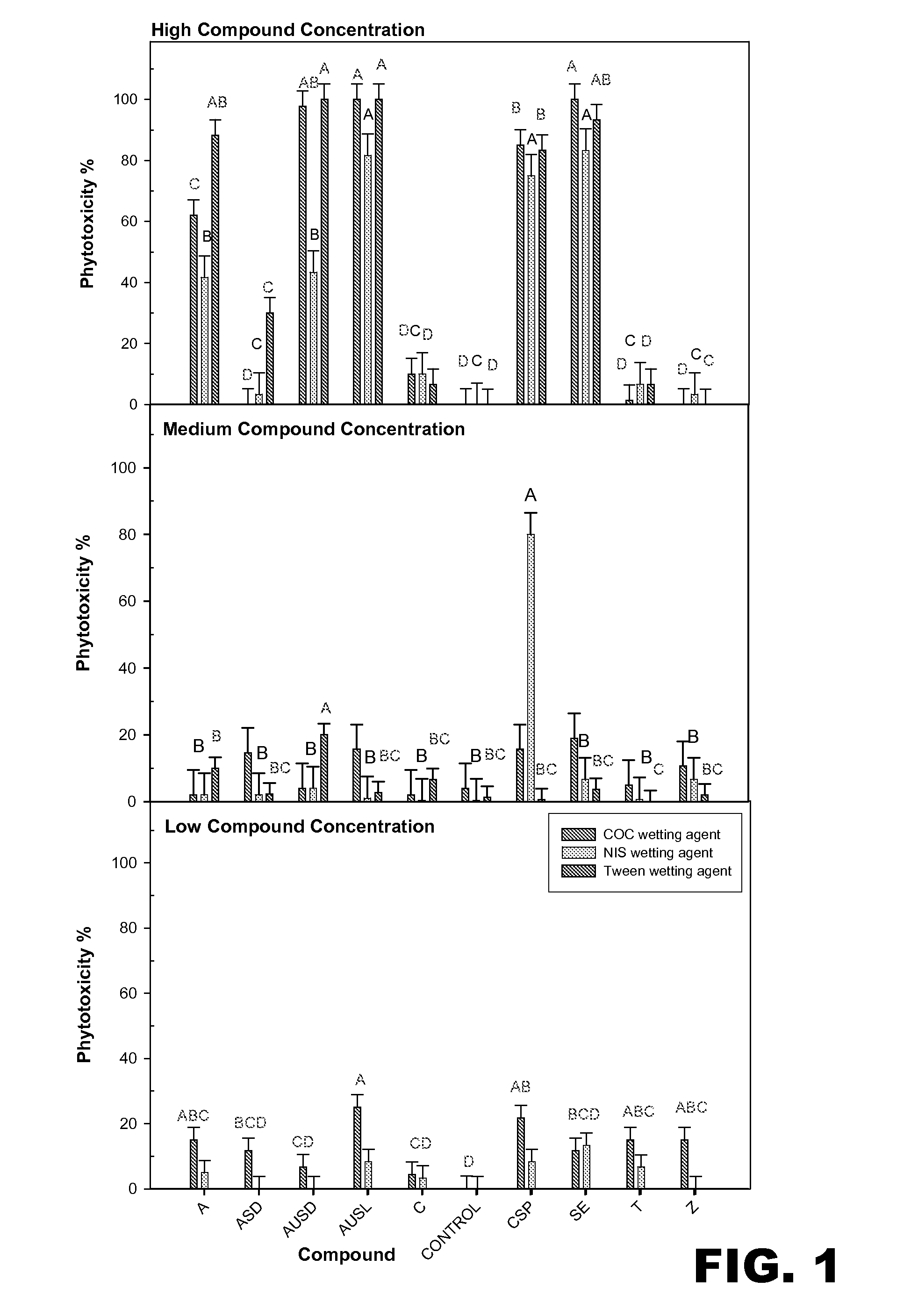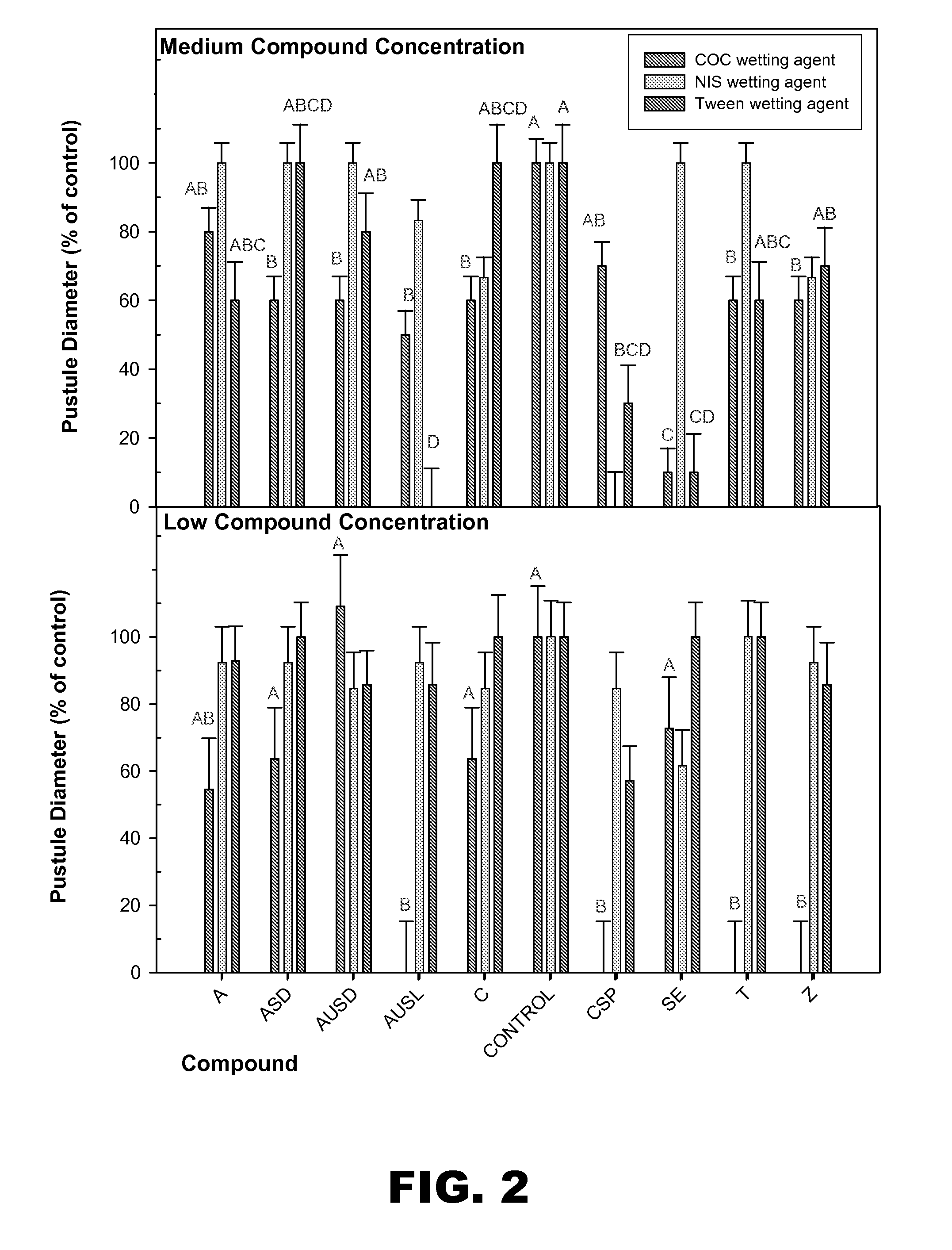Compositions for treating infestation of plants by phytopathogenic microorganisms
a technology of phytopathogenic microorganisms and compositions, which is applied in the direction of biocide, dead animal preservation, peptide/protein ingredients, etc., can solve the problems of limited use of traditional inorganic fungicides for soil treatment, environmental non-recyclable fungicides or derivatives of fungicides, and significant drawbacks
- Summary
- Abstract
- Description
- Claims
- Application Information
AI Technical Summary
Problems solved by technology
Method used
Image
Examples
example 1
Determine the Appropriate Concentration of the Fungicidal Compounds and the Appropriate Wetting Agent
[0081]The effectiveness of several different fungicidal compounds to prevent rust on beans was compared. Each of the fungicidal compounds was applied at three different concentrations. The medium concentration was a 10-fold reduction from the high concentration, and the low concentration was a 100-fold reduction from the high concentration (Table 1). Each fungicidal compound was applied in solution with one of three different wetting agents: 1% v / v crop oil concentrate (COC), 0.125% v / v non-ionic surfactant (NIS), or 4% v / v Tween 20 (Tween), a non-ionic detergent. All of the wetting agents were aqueous and not oil based. Phytotoxicity, or plant damage, and the efficacy of compound in preventatively controlling rust on beans were determined. All of the compounds detailed in Table 1 are commercially available from Novus International, Saint Louis, Mo. (i.e., the compound abbreviated (A...
example 2
Preventive and Curative Control of Fungicidal Compounds on Rust in Beans
[0093]The efficacy of each fungicidal compound in preventing or curing rust in beans was determined by testing medium concentrations of the compounds in the presence of the wetting agent NIS.
[0094]The experimental design, planting, treatment, inoculation, and ratings were as described in Example 1, except that the timing of compound treatment and inoculation were changed for the curative trial, as detailed in Table 3.
TABLE 3Timetable of activities presented in days after seeding.ActivityPreventive TrialCurative TrialCompound applied12 d14 dInoculated with rust13 d12 dRated25 d14 d
[0095]Results. Preventive application of the compound CSP significantly reduced (P=0.05) rust pustule diameter. The prevention of rust by CSP was much greater than that observed with any of the other treatments (top plot, FIG. 5). CSP displayed significant phytotoxicity, however. In two of the three replicates, the leaves of plants trea...
example 3
Preventive and Curative Control of Fungicidal Compounds on Rust in Wheat
[0097]The efficacy of each fungicidal compound in preventing or curing rust in wheat was determined by testing medium concentrations of the compounds in the presence of the wetting agent NIS.
[0098]Experimental Design. Randomized complete block with three replicates per treatment. The experimental unit was a soil filled insert containing 6 wheat plants.
[0099]Planting. Ten wheat seeds of the susceptible wheat cultivar “Alliance” were seeded into a soil filled insert. Three days after emergence the plants were thinned to 6 plants / insert. Results were averaged across these 6 plants.
[0100]Treatment. Wheat plants were treated (using a hand held sprayer) with compound approximately 12 days after seeding (once the second leaf has fully emerged). The different timings of treatment for the two trials are detailed in Table 3. Non-treated controls were included in reach replicate.
[0101]Inoculation. At the appropriate time f...
PUM
| Property | Measurement | Unit |
|---|---|---|
| diameter | aaaaa | aaaaa |
| temperature | aaaaa | aaaaa |
| diameters | aaaaa | aaaaa |
Abstract
Description
Claims
Application Information
 Login to View More
Login to View More - R&D
- Intellectual Property
- Life Sciences
- Materials
- Tech Scout
- Unparalleled Data Quality
- Higher Quality Content
- 60% Fewer Hallucinations
Browse by: Latest US Patents, China's latest patents, Technical Efficacy Thesaurus, Application Domain, Technology Topic, Popular Technical Reports.
© 2025 PatSnap. All rights reserved.Legal|Privacy policy|Modern Slavery Act Transparency Statement|Sitemap|About US| Contact US: help@patsnap.com



